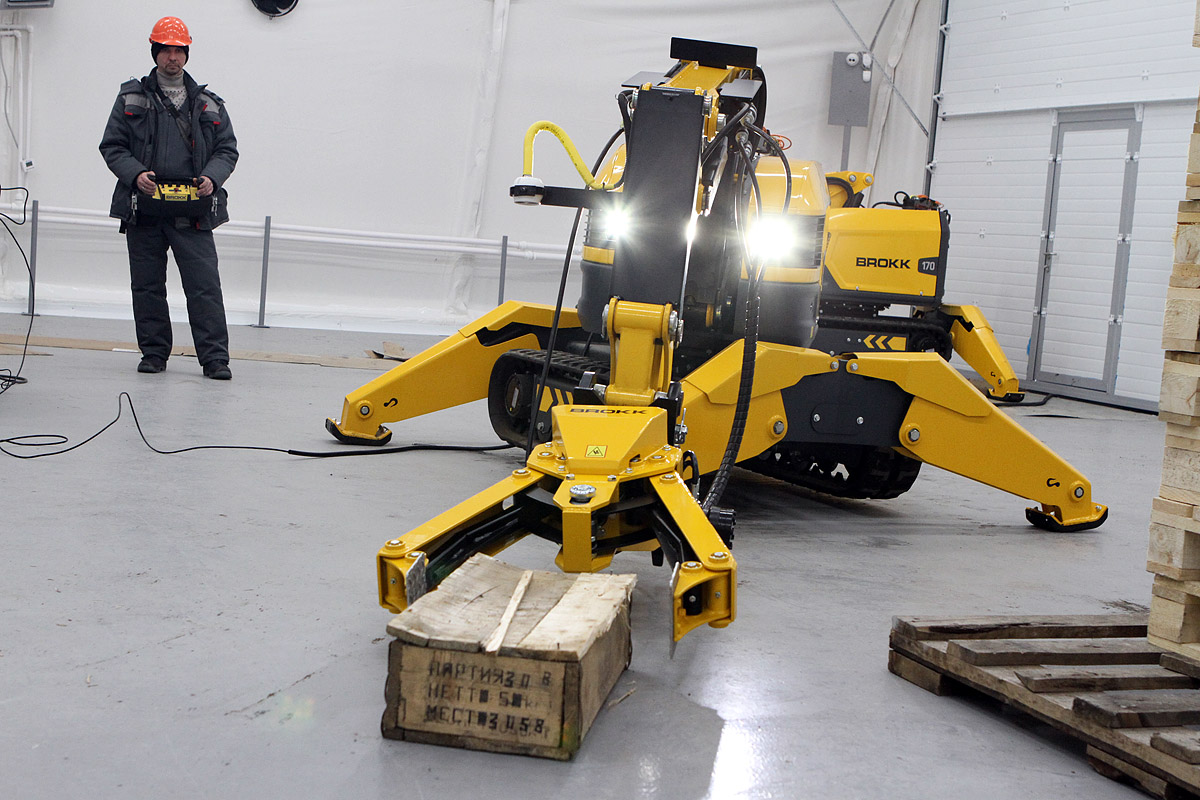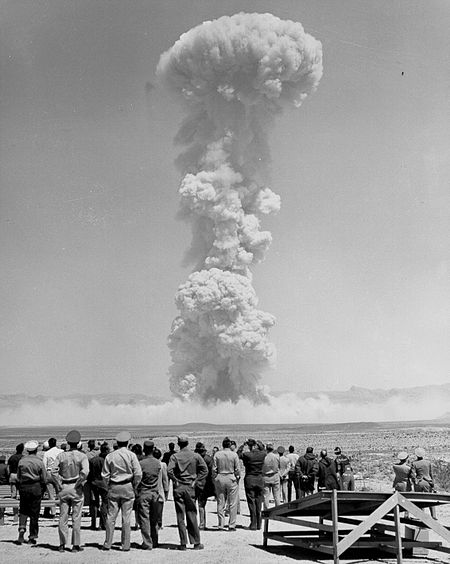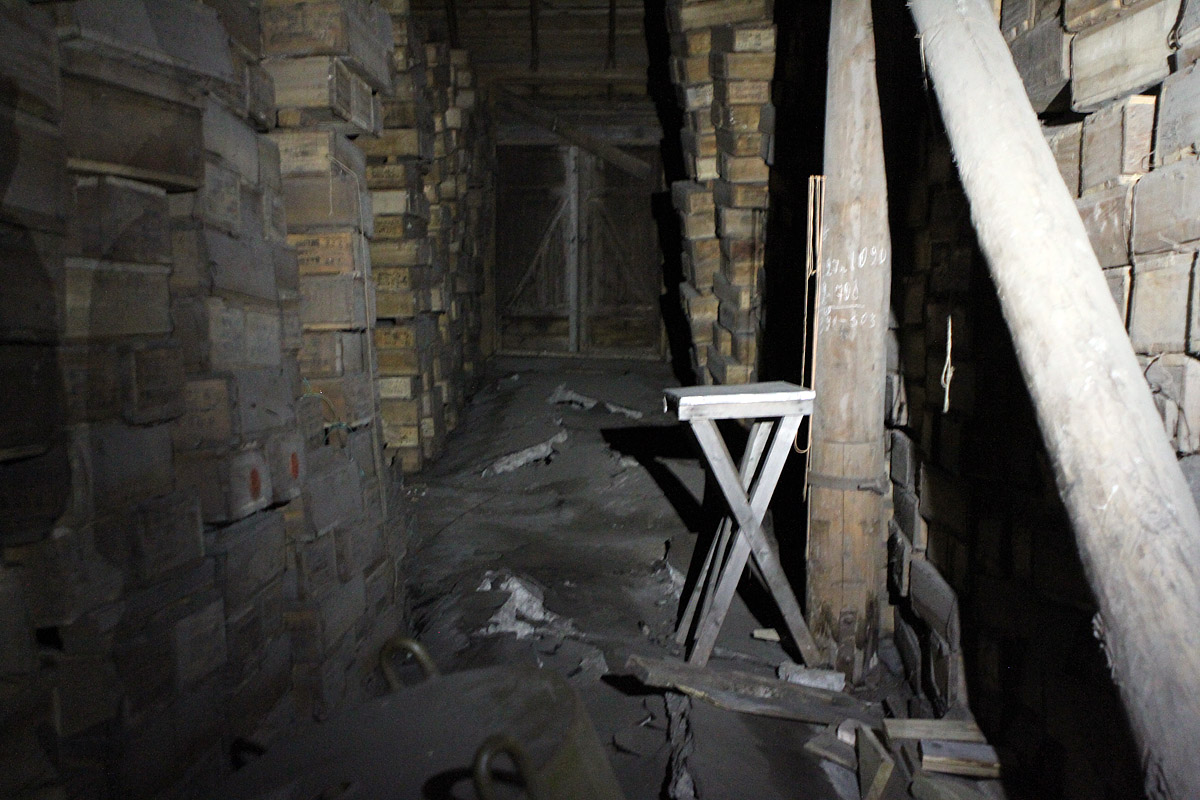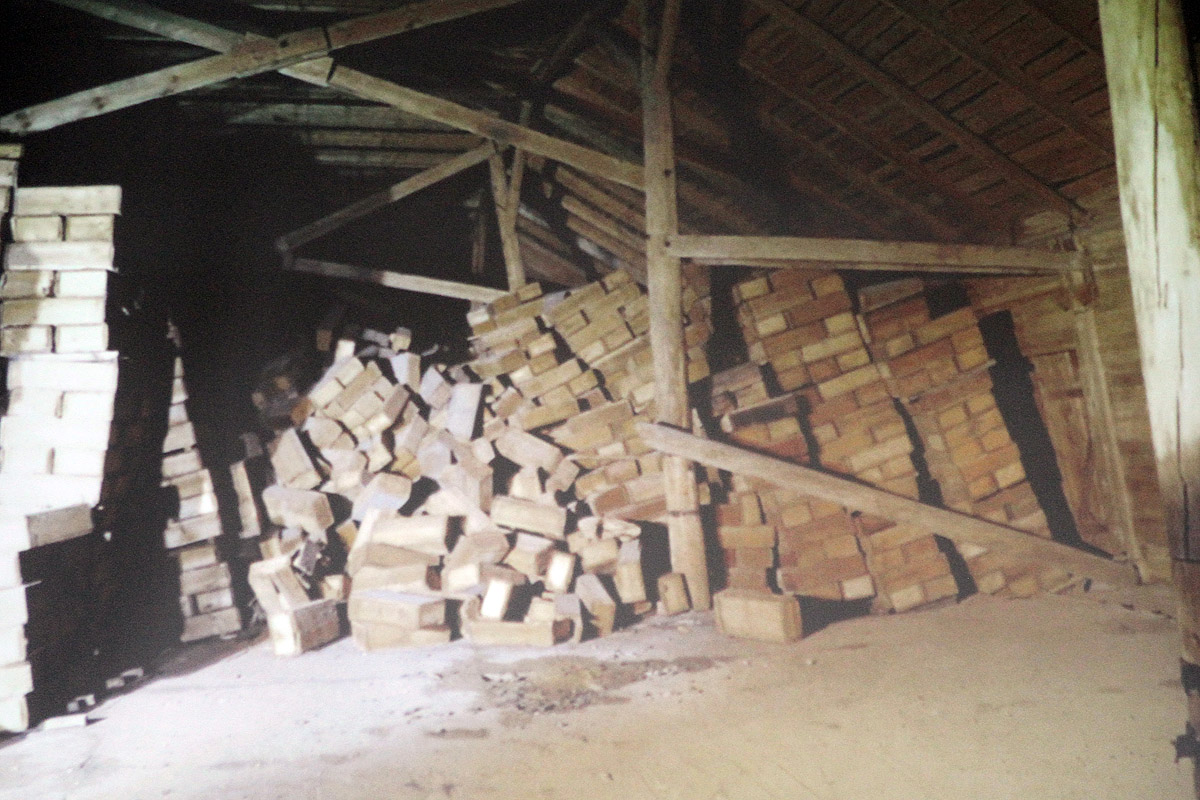For the first time I visited this facility more than 10 years ago as a junior researcher at the Institute of Industrial Ecology, Ural Branch of the Russian Academy of Sciences. Few people know beyond the Urals, but for over 60 years, thousands of tons of radioactive monazite, the USSR’s reserves collected to launch the thorium component of the atomic project, have been stored 200 km from Yekaterinburg. For a long time hidden by a veil of secrecy, this object has generated a huge number of rumors and myths. Over the past 25 years, his owners have changed, various options for using monazite have been discussed, serious public passions have been boiling around. And now, it seems, the monazite storage base is entering the final stage of its existence. On November 6, a public hearing was held on a project involving the export of monazite for export to China. This article is devoted to the difficult history, myths and real dangers of the enterprise, as well as its immediate future. It was written by me for the Ekaterinburg
portal e1 . And below I give it in the author's, more detailed and detailed form.

Thorium and the atomic project of the USSR
In 1945, the world entered a new, atomic era. The creation and first use of atomic weapons led to the start of the atomic race, which continues to this day. At that time, the creation of weapons based on new physical principles required the attraction of incredible financial, organizational, and human resources. The greatest scientists worked on the creation of new fields of knowledge, industries, and on the solution of many problems, paving the way for the development of atomic energy in the military, and then for peaceful purposes. One of the questions that they tried to find an answer to is what materials can be used as nuclear fuel and filling. One of the options that has found the greatest distribution in nuclear energy is uranium. To use it, it must be enriched in the 235th isotope (for example, this is being done in our Urals in Novouralsk, which is now associated with another scandal
about which I wrote earlier ). Another material that has found greater use in atomic weapons is plutonium. This is an artificial element that is obtained from uranium by irradiating the latter in special industrial nuclear reactors, which
was my previous post on Habré . But there was a third option - thorium. This is a natural element from which it is also possible to obtain the uranium isotope 233rd, which is convenient for atomic weapons in reactors. Research work on the use of thorium was carried out a little less than 10 years, but by 1953, the head of the Soviet atomic project Kurchatov summed up the results of this area, noting its inappropriateness compared to the uranium-plutonium fuel cycle. On that topic and closed. And both here and in the USA, although the Americans in 1955 even managed to carry out an experimental explosion of the device using U-233.
 An explosion of a 22 kt nuclear device based on Pu-239 and U-233 as part of the Teapot test on April 15, 1955, USA.
An explosion of a 22 kt nuclear device based on Pu-239 and U-233 as part of the Teapot test on April 15, 1955, USA.Storage base near Krasnoufimsk
Nevertheless, the extraction of thorium raw materials in the form of monazite was established in the USSR from the 1930s, before the start of the atomic project, against the background of a general interest in radioactive materials. They mined it in at least two places - in Siberia, at the Tarak deposit near Kansky, and in the Rezhevsky district of the Sverdlovsk region, in the village of Ozerny. Monazite was washed from river sand, enriched, and large dumps of depleted sand still containing thorium were formed. Their reserves subsequently became a source of problems, since the local population in the village of Ozerny and at Kostousovo station uncontrollably used this fine sand as a building material. As a result, in the early 90s, decontamination operations had to be carried out in these settlements by the Toron production association, which had previously worked in the Chernobyl accident zone. Fortunately, residents received even higher, but not catastrophic doses. But this is another story.
After the cessation of work on thorium in the nuclear project, it was decided to collect its strategic reserve in one place - near Krasnoufimsk (200 km from Yekaterinburg). Since 1941, here, near the Zyurz station, a state reserve base was built under the code name "mailbox 118" for strategic food supplies. On the territory of a little more than 20 hectares 19 wooden barns-sheds measuring 85 * 14 meters were placed, in which a grain reserve was located. But at the beginning of 1960 a new cargo called “OM concentrate” began to arrive at the base. Regularly, in batches of 200 tons in the form of wooden 50-kg boxes with bags filled with brown sand - monazite. For 4 years, about 82 thousand tons were brought to the base. An additional 4 was added to the existing barns, filled from top to bottom. As such, the storehouse existed until the mid-90s.
In 1994, at the initiative of Governor Eduard Rossel, the monazite storage base was transferred to the ownership of the Sverdlovsk Region, and reorganized into the regional
state institution UralMonatsit . Then such an acquisition seemed potentially profitable, since monazite contains not only thorium, but also tens of thousands of tons of rare earth oxides (REE), the prices of which in the 90s were very high. The idea of obtaining these elements from monazite seemed commercially very promising, but while developing acceptable processing technologies, China managed to conquer the global REE market. As a result, the stock of monazite remained a dead load on the property of the region.
 The internal condition of warehouses and stacks with monazite. The concrete floor broke, in some places the piles collapsed. My photo of November 6 this year
The internal condition of warehouses and stacks with monazite. The concrete floor broke, in some places the piles collapsed. My photo of November 6 this year Still internal views. Archival photo from presentation materials of the November 6 hearings.
Still internal views. Archival photo from presentation materials of the November 6 hearings.You can look at the view of the old wooden warehouses before the construction of new metal ones (it was somewhere after 2008) in this video of 2001 (there is also my former boss who defended
his dissertation on the impact of this object on the environment):
Meanwhile, the technical condition of the warehouses was getting worse, the structures built during the war and for other purposes were significantly dilapidated. Under the weight of the boxes with heavy monazite, the concrete floors of the warehouses broke, their walls began to collapse, repairs and numerous supports did not remove the risk of collapse. At the expense of the region, metal hangars were built around wooden barns on new foundations, with the expectation that even when the internal buildings collapse, the monazite will not go outside.
 The modern look of metal hangars erected over old wooden barns.
The modern look of metal hangars erected over old wooden barns. Old wooden barn inside a new metal
Old wooden barn inside a new metalEnvironmental Impact - Myths and Reality
As often happens, the presence of a guarded object with incomprehensible, but radioactive contents, could not but grow for many years a lot of rumors and myths. Even the removal of the vultures of secrecy in the 90s did not greatly clarify the situation, since not only the accumulated myths but also various attempts to manipulate on the basis of dangers, both real and imagined, closely intertwined were imposed on the understandable anxiety of local residents. In numerous publications on Uralmonazit, you can find references to a new life form that appeared in warehouses, and that all employees of the enterprise died of cancer and terrible diseases, and about students who caught an incomprehensible illness while working near warehouses.
In the mid-1990s, scientists began to study the characteristics of monazite and the influence of the entire object on the environment. The Institute of Industrial Ecologists of the Ural Branch of the Russian Academy of Sciences (IPE Ural Branch of the Russian Academy of Sciences) has been studying the situation at the facility since 1995, i.e. already for 25 years. The author of these lines began his career in science at this institute, and visited the facility for the first time more than 10 years ago as a junior research fellow.
What can be dangerous monazite as a radioactive material? The thorium contained in it (thorium oxide makes up to 10% by weight of monazite) is a natural weakly radioactive element, as natural as, for example, uranium (uranium, by the way, also exists in monazite as oxide - up to 1% by weight). It can be dangerous for several reasons. Firstly, in high concentrations it can be a source of gamma radiation, which leads to additional (in addition to the fact that a person receives 24 hours a day from other natural sources, including natural thorium) external radiation. Secondly, during its decay, volatile radioactive gas Toron is formed (it is an isotope of radon, and radon is also released during the decay of uranium, but it is less). Prolonged inhalation of radon isotopes in high concentrations leads to exposure of the lungs to alpha particles. However, the magnitude of these factors and the degree of their danger can and should be determined in specific conditions. I will give some brief results of studies of the dangers of these factors that have developed under specific conditions on the basis of Uralmonazit, summarized in numerous publications of the institute’s staff.
Firstly, the environmental impact of the facility is greatly exaggerated. Yes, near the warehouses and especially inside them, the gamma background is tens and hundreds of times higher than the “normal” levels (on average inside the warehouses about 90 μSv / h, while the average gamma background in Yekaterinburg is 0.1-0.2 μSv / h), which limits the time the staff is there. But outside the territory, the background is normal.
 The dose rate at and around the base in nSv / h (1 μSv / h = 1000 nSv / h, so the “300” contour in the diagram means the dose rate of 0.3 μSv / h). Scan from an article of the Bulletin of the Ural Branch of the Russian Academy of Sciences about Uralmonazite
The dose rate at and around the base in nSv / h (1 μSv / h = 1000 nSv / h, so the “300” contour in the diagram means the dose rate of 0.3 μSv / h). Scan from an article of the Bulletin of the Ural Branch of the Russian Academy of Sciences about UralmonaziteSecondly, neither monazite itself nor the radioactive thorium contained in it were found outside the warehouses - neither in water, nor in soil, nor in vegetation samples. Which is not surprising. Monazite obtained by washing river sand is insoluble, and it is rather heavy. Therefore, it is not washed out by precipitation; it is not carried out by the wind in the form of dust. Special experiments conducted over several years only confirmed these conclusions. Roughly speaking, even a collapse or a fire in any of the storage barn would not cause a dust emission of monazite outside the territory. The same applies to radon isotopes - volatile decay products of thorium and uranium. Their concentrations are increased inside the warehouses (on average about 3.7 kBq / m3 of toron and about 200 Bq / m3 of radon), but outside the territory they do not differ from the usual levels for this region.
Thirdly, data on 438 employees (the author of these lines personally digitized these archives) were found in the archives of the enterprise, working on the basis from 1960 to 1997, including several dozen who participated in the manual unloading of monazite in the 60s. A comparison of the structure of causes of death among employees of the enterprise and the rest of the population of the Krasnoufimsky district (data on the causes of death of more than 4,600 residents over the same years was collected) did not reveal significant differences. So, no growth of cancer and other diseases was detected in the employees of the enterprise.
Fourthly, I would like to comment on a very popular myth about USU students who came to that area to harvest onions in the 80s and got an obscure disease, which, allegedly, is associated with monazite warehouses. This question was asked at the hearing on November 6, and the director of the Institute of Industrial Ecology of the Ural Branch of the Russian Academy of Sciences Mikhail Zhukovsky answered it, who carried out scientific research in these warehouses and taught the course “Medical and Biological Fundamentals of Radiation Safety” for 25 years at the physics laboratory where I studied :
“Mankind has been familiar with ionizing radiation since 1895. During this time, it is well studied what can happen when it affects the body, and what cannot. No contact with monazite or its packaging could lead to the neurological effects and symptoms that were observed in students. Now it is probably difficult to find out exactly what exactly caused those symptoms then. Various versions were considered, including poisoning with various chemicals, fertilizers or pesticides. But we can say for sure that the reason for the observed effects does not correspond to the effects of ionizing radiation. ” Mikhail Zhukovsky, Director of IPE UB RAS at the hearing on November 6. If anything, I showed him the text of this post before publication and he did not find gross errors, although of course, if any, they are entirely on my conscience.
Mikhail Zhukovsky, Director of IPE UB RAS at the hearing on November 6. If anything, I showed him the text of this post before publication and he did not find gross errors, although of course, if any, they are entirely on my conscience.It is important to note another conclusion of scientists related to the storage base of monazite. Whatever the technology of its processing is used to produce thorium or to obtain rare earth elements, this process will be associated with the formation of a large amount of radioactive waste, slightly less than the amount of monazite itself. Moreover, unlike monazite, which is insoluble, these wastes will already be in a liquid and mobile, and therefore more dangerous form. Therefore, regardless of financial estimates, the refusal to build a monazite processing plant on the territory of the base can be considered a good solution from an environmental point of view.
Repack and take out
On November 6, public hearings were held in Krasnoufimsk on the EIA project (justification of the environmental impact) of the planned activity for the export of monazite from the storage base. The start of this export has been waiting for several years, and now the process goes to the finish line.
 At a public hearing in Krasnoufimsk on November 6, a project for repackaging and exporting monazite was presented. About 45 residents of the region took part in the hearings with the participation of the head of the city administration, the leadership of RedZemTehnologii, SpetsAtomServis, GU Uralmonatsit and the Institute of Industrial Ecology of the Ural Branch of the Russian Academy of Sciences.
At a public hearing in Krasnoufimsk on November 6, a project for repackaging and exporting monazite was presented. About 45 residents of the region took part in the hearings with the participation of the head of the city administration, the leadership of RedZemTehnologii, SpetsAtomServis, GU Uralmonatsit and the Institute of Industrial Ecology of the Ural Branch of the Russian Academy of Sciences.Back in 2013, the regional government for 50 million rubles at an auction sold monazite reserves to RedZemTehnologii LLC. The agreement assumes that in addition to concentrate removal outside the region, the territory of the storage base will be rehabilitated with the removal and treatment of all radioactive waste. At the hearing, this issue was not considered, but on the sidelines of the company representatives confirmed that the monazite will go to China for further processing and receipt of rare earth elements. In China, environmental legislation is simpler than Russian legislation, and the processing of monazite has been put on an industrial basis.
Repacking and dispatching of monazite will be carried out by a contractor company with experience in working with radioactive substances and radiation hazardous facilities - LLC PC SpetsAtomServis. On the territory of the storage base and near it, noticeable changes have already occurred. Since September 2018, overhaul of the railway dead end and the Zyurz station for loading containers with monazite was carried out in accordance with the requirements of the rules for the transport of dangerous goods by rail. New roads are also being poured at the base, and a mobile technological complex is being created on the basis of temporary buildings and structures for carrying out work to extract concentrate from hangars and transfer it into modern transport packaging. Before the hearing, representatives of SpetsAtomService showed how the whole process would be organized.
In this video, shot by journalists a week before my visit there on the 6th, you can see how everything is organized:
 Schematic treatment of monazite will be organized as follows. All work inside the warehouses will be conducted without the constant presence of people there, both for reasons of radiation safety and to avoid the presence of people in dilapidated barns during mechanical work.
Schematic treatment of monazite will be organized as follows. All work inside the warehouses will be conducted without the constant presence of people there, both for reasons of radiation safety and to avoid the presence of people in dilapidated barns during mechanical work. Piles from wooden boxes with monazite will be dismantled using Swedish Brokk robotic manipulators with remote control. Such robotic manipulators have already established themselves at the facilities of Rosatom and during the work of the Ministry of Emergencies.
Piles from wooden boxes with monazite will be dismantled using Swedish Brokk robotic manipulators with remote control. Such robotic manipulators have already established themselves at the facilities of Rosatom and during the work of the Ministry of Emergencies. While the workers are training to control the manipulators in the workshop for equipment, they are working on the grabs of boxes from different positions.
While the workers are training to control the manipulators in the workshop for equipment, they are working on the grabs of boxes from different positions. The manipulators are equipped with cameras, the operators themselves will be outside the warehouse during work.
The manipulators are equipped with cameras, the operators themselves will be outside the warehouse during work.
The white hangar on the right is a warehouse with monazite. A hole for the conveyor belt will be made in its wall. On it, boxes with monazite will be fed into this green modular design from several containers for repacking. Inside it, the boxes fall into the “piercing” installation, where the hydraulic press will break through the bottom of the box and pour monazite concentrate into the receiving hopper. From there, a pneumatic actuator will supply monazite through pipes to the neighboring module for repacking in 2-ton big bags. All these processes will take place under remote control and without the constant presence of a person. After the marking and certification procedure, the big bags will be loaded into 20-foot ISO transport containers, which will be transported by road for further loading onto railway transport to non-public roads near Zyurzya station, located within walking distance from the base.

Broken wooden and paper containers from boxes with monazite will be folded into metal containers and sent for further sorting. This process will already be conducted with the participation of people. For their work, several modular workshops have already been erected on the territory of the base. Outside, they look like the photo above.

View of the sorting shop from the inside. In addition to the entrances for people, it has an entrance group-gateway (top left) with double gates through which loaders will bring metal containers from the repackaging module with the remains of wooden and paper containers. It will be laid out on the conveyor, from where the workshop workers will disassemble it on tables for processing.

Wooden containers will be manually cleaned of monazite residues with industrial vacuum cleaners and sent further to the chopper (conveyor on the left). After dosimetric control, if the container will have residual radioactive contamination, it will be transferred to the specialized radioactive waste management organization of the Federal State Unitary Enterprise RosRAO for further processing and disposal.

Through such systems of radiation control of hands all personnel working in the container processing workshop will pass. Passage inside is possible only through sanitary inspection rooms (as it should be two there - male and female) with full dressing in overalls and personal protective equipment and control in the form of individual dosimeters.

All work will also be monitored from the control room.
Operations with the concentrate will begin after obtaining permits from Rostekhnadzor, Rospotrebnadzor, and Rostransnadzor. It is planned that work will begin in the first quarter of 2020. If everything goes according to plan, then in a few years the present territory of the USSR thorium reserve storage base will be completely freed from radioactive materials and deactivated. It is assumed that after this it will be possible to place a new industrial facility on it.
But in this video of the local Krasnoufimsky TV channel you can see how the hearings went, the speaker of the project and the answers of experts, including the director of the Uralmonazit base and the IPE of the Ural Branch of the Russian Academy of Sciences: